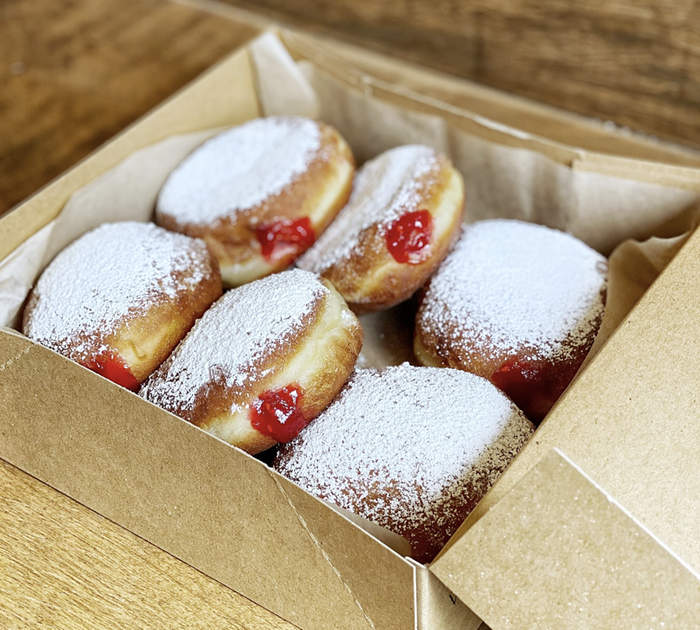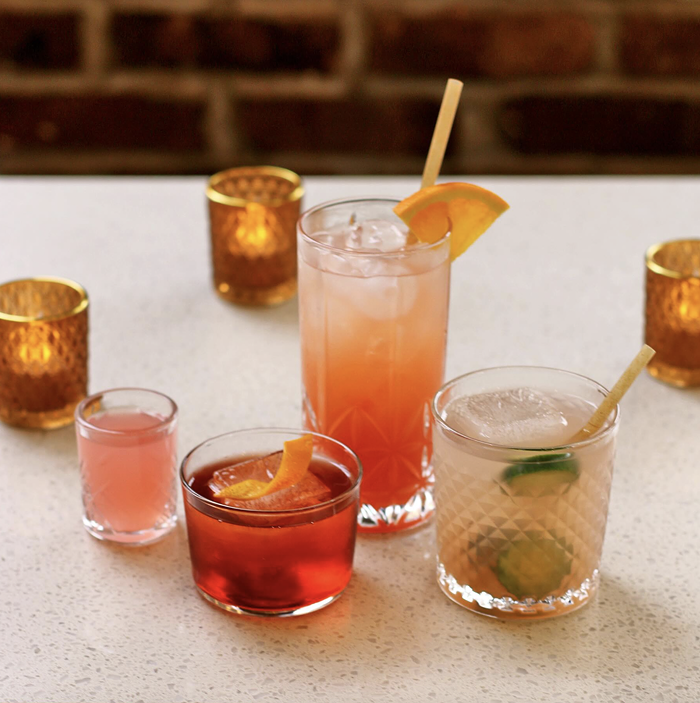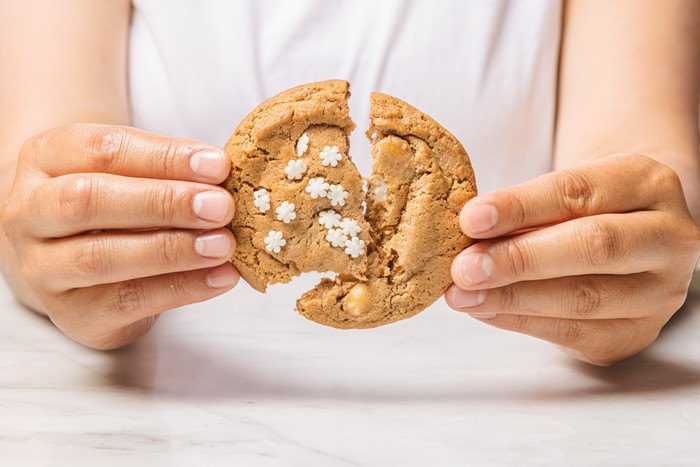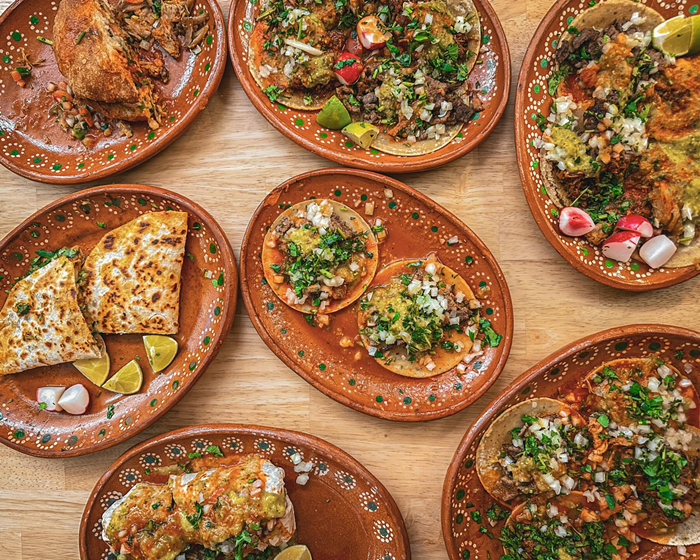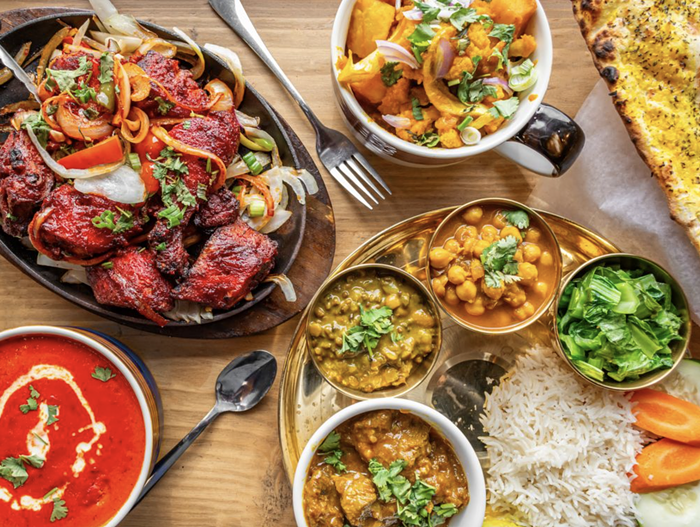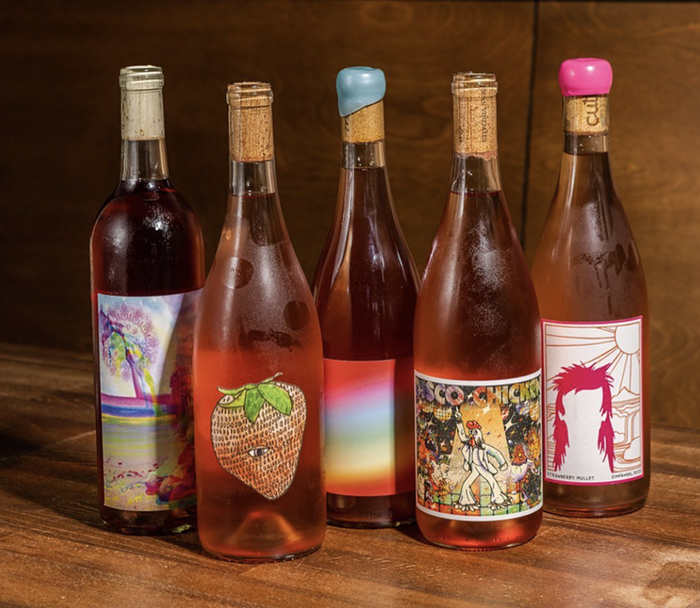When craft cocktailing first took flight in the United States, one of the nation's leading bars (the Violet Hour in Chicago) posted a screed of "house rules" throughout its dimly lit speakeasy. Besides outlawing baseball hats and cellphone use, the newfangled temple of hooch defined drinks it (justifiably) prohibited—Jäger bombs, light beer, Grey Goose. Punctuating the blacklist was a fan favorite: "No Cosmopolitans," it scornfully read.
It was a stuffy rebel yell, declaring war on a sugar-rush drinking culture that for decades ruled bars with a sticky fist. Noses turned up at populist cocktails like the cosmopolitan and dirty martini, deeming them unfit for the refined palates of guys with complicated facial hair.
But as old-timey mustaches untwist and high-end cocktail joints aim to be more approachable, bartenders are refurbishing the passé drinks they once spurned.
For Rumba cocktail captain Tommy Stearns, who jokes that he's old enough to actually remember the 1980s and '90s, it's a nostalgia thing. His formative drinking years were spent in nightclubs and dive bars, where Long Island iced teas and neon party shots reigned. "While some things I was really glad to leave behind, some of these things found a way into the deep, dark spots of my heart," he admits.
That explains the revamped Surfer on Acid that recently washed up on Rumba's menu. The liquid blackout candy—traditionally a shotgun marriage of Jägermeister, Malibu rum, and pineapple juice—here wields a house coconut cream instead of the coconut-flavored rum, while the Jäger, pineapple, and added sherry come together in a less abrasive union. This frothy sipper is as uninhibited as the original club shot, minus the headache and inexplicable urge to fist pump.
"It comes from maybe a bad place, but we're trying to take it back and show that, yeah, good ingredients will make a good drink," says Stearns, noting the trend is part of a broader shift from mixology to hospitality.
At Good Bar in Pioneer Square, bar manager Josh Batway previously revived another college-bar staple, the Alabama Slammer, ditching its Southern Comfort for peach-infused whiskey.
His latest throwback was inspired by Mayor Ed Murray. Despite the experimental ways the cocktail movement has splintered, a lot of people just want something familiar, Batway says. After Seattle's levier-in-chief stopped into Good Bar a few times for cosmos, Batway wanted to help "bridge the gap" between comfort zone and something new. His subtle cosmo riff—dubbed Vanity Fair—drowns the love-it-or-hate-it drink's Ocean Spray past with real Northwest cranberry juice and a bittersweet liqueur.
For his next rehab project, Batway hopes to make an extra-dirty dirty martini, incorporating mushrooms for an additional umami layer. "I always want to show people there was something there, an idea that made sense, a flavor profile that worked together," he says.
Thank (or blame) Portland's Jeffrey Morgenthaler for spurring the revival of drinks from the so-called cocktail dark ages—when disco-era drinks like the Harvey Wallbanger pushed out the pre-Prohibition cocktails that were fashionable through the 1950s and '60s. In 2014, the trendsetting barman opened the renowned Pepe Le Moko, focusing on 1970s-era cocktails like the grasshopper. Soon, bartenders from Seattle to Miami started tweaking kitschy drinks for contemporary tastes, using fresh ingredients and dialing back the sweetness.
For some, the appeal is genuine nostalgia or ironic novelty, though younger drinkers often don't realize that old-man favorites like the Amaretto Sour (the cocktail that started this whole thing) were once stigmatized, says Paul Berryman, co-owner of Corvus & Co. But after years of innovation and experimentation, he says it's only natural to mine forgotten hits.
"People keep pushing the envelope with cocktails. And the next thing you know, you're grinding up ants to rim a glass, trying to do something that nobody's ever done before," Berryman says. "The reaction to that is to look backward and see what made things so great in the past."
Of course, the past isn't always so great (remember appletinis?). While many 1970s faves earned their indictments, others got a bad rap only after decades of abuse. Working at a rum bar, Stearns holds up the mai tai and daiquiri as examples of long-misunderstood drinks. The earliest mai tai recipes were perfectly respectable until tourist traps warped them into saccharine fruit punches. Though daiquiris belong on a pedestal every bit as tall as the old-fashioned, many people still associate daiquiris with the slushy mixes barfed up along Bourbon Street.
Even as bartenders elevate "bad" cocktails, eyes still roll among large groups when someone orders a tequila sunrise. Cravings are still suppressed when someone who really wants a White Russian self-consciously orders something else. But perhaps times are changing.
"The best thing that can happen with this is that it takes the pretension out of bartending and lets people just come in and enjoy whatever they want," Stearns says.
We'll drink another cosmo to that.
FOUR TO TRY
Baller Piña Colada: Even in slushy form, the piña colada has always had a sunburned sex appeal. However, Rumba irreverently boosts this common-person's beach treat with a few superb rums, plus a funky agricole. The coconut-laced indulgence is delivered in a blingy copper pineapple, instantly transporting you to a private island owned by Mr. T. Everything about this "baller" concoction is magically ridiculous, and at $40 (!), it's best enjoyed when Jeff Bezos is buying. But for 25 minutes, you'll feel like Kanye on vacation. Pro tip: It's no longer on the menu, but ask nicely and you shall receive. Rumba, 1112 Pike St.
Vanity Fair: Sex and the City solidified the cosmopolitan's girls-night-out reputation with another generation. But the high-heeled image has long pigeonholed Carrie Bradshaw's choice slurper. Vodka dudes need not feel emasculated by a cosmo done right, as found at Pioneer Square's Good Bar, where its version is named for a glossy magazine. The vodka fortifies the commanding mix of Aperol—Campari's bitter orange cousin—and the real juice of Northwest cranberries, which makes the Vanity Fair more Thanksgiving than college fancy. Good Bar, 240 Second Ave S.
Amaretto Sour: If your grandpa had a nickel for every Amaretto Sour he spilled on his shag carpet, your birthday presents would have been a lot cooler. But the return of his go-to cocktail—without the plastic-bottle sour mix—is enough of a gift. Modern versions, like the one found at Corvus & Co., inject overproof bourbon to cut the amaretto's cloying pitfalls. When served on the rocks, the nutty/lemony quaff tempts repeat orders. While it's best enjoyed in a musty wood-paneled basement, this laid-back cocktail spot's hip confines are still plenty cozy. Corvus & Co., 601 Broadway E.
Godfather Part 2: Voted the best wedding cocktail by divorced uncles from New Jersey, the Godfather is nearly impossible to screw up. This liquid equivalent of a 1970s porn 'stache is typically equal parts Scotch and amaretto, though you have to ask for a heavier splash of the J&B than that crusty bottle of Disaronno. Of course, the Foreign National crew needs no instruction to balance its twist on the retro after-dinner drink, and unlike wedding barkeeps, they use the good (but not too good) stuff. The smoky Compass Box whiskey in the sexy cocktail den's version charges through the dual nuttiness of almond and walnut liqueurs, lifted with a hint of sarsaparilla and Boker's bitters. We'd endure a hundred clichéd speeches for a glass of this delightful remix. Foreign National, 300 E Pike St. ![]()

